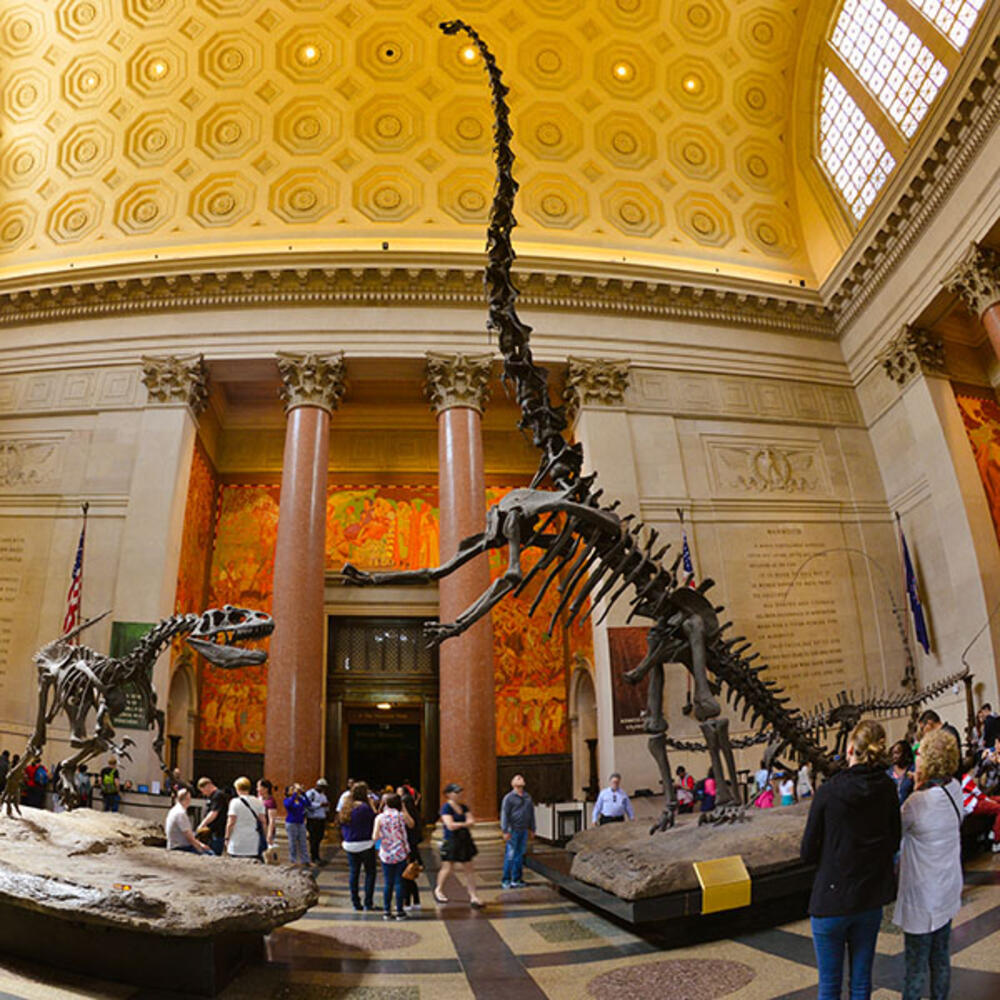Felix M. Warburg Hall of New York State Environment
An October view near Stissing Mountain.
Ninety miles north of New York City in Dutchess County lies Stissing Mountain and the village of Pine Plains. Here, as in other parts of the world, each individual feature of the landscape is the home of definite plants and animals whose lives depend upon their environment and upon each other.
This hall is intended to give you a better understanding of a living landscape.
This hall is included with any admission.
Join as a Museum Member
Learn More
»
Enjoy free tickets for General Admission, special exhibitions, giant-screen movies, planetarium shows, and more!

In This Hall
Museum Hall Guide
Resources For Educators: Hall of New York State Environment
Educators can download an overview of the natural elements depicted in the Hall of the New York State Environment.
Exhibit
Geological History and Structure
Midway between the Hudson River and the Connecticut state line is the sharp profile of Stissing Mountain.
Exhibit
Glaciation
This case contains a triassic sandstone slab showing evidence of glaciation, and photographs of glacial features in the present landscape.
Exhibit
Relations of Plants to Geology and Soil
These six display cases show landscapes shaped by different rocks. The type of rock affects the composition of soil and influences...
Exhibit
Soils and Soil Conservation
This case contains three large soil sections, as well as a collection of rocks that weather into sands, silts, and clays.
Exhibit
Life in The Soil
Life in the soil is ordinarily invisible to man, but it is an important factor in the existence of life above.
Exhibit
Roots in the Soil
Roots serve as anchorage for plants and help to reduce soil erosion. But their chief function is to absorb water from the soil, thereby...
Exhibit
Rotation of Farm Crops in Dutchess County, New York
Crops of this region are connected almost entirely with the dairy industry, either as fodder or for soil enrichment.
Exhibit
The Apple Orchard in Dutchess County, New York
Friends and enemies of the orchard.
Exhibit
Fertilizers in the Soil
In the fall man takes crops away, and unless he makes replacements of some sort, the soil becomes poor and useless.
Exhibit
From Field to Lake
A block of ice embedded in sand and gravel melted about 15,000 years ago, leaving this pond known as a glacial kettle.
Exhibit
Life in the Water
This two-part section illustrates the cycle of nutrition and decay in the water and a lake's seasonal cycle.
Exhibit
Seasons in the Woods
This three-part diorama shows how plant life changes seasonally in the woods.
Exhibit
The Changing Forest
Progressive changes after fire, cattle grazing, and forest cutting.
Exhibit
Agriculture
This five-part diorama describes land use from before European settlement through the 1950's.
Exhibit
New York State Geologic Map
A color-coded map showing elevation of the region from Hudson, New York, at the top down to New York City at the bottom.
Exhibit
An October Afternoon Near Stissing Mountain
Every living thing, over a long period of time, has become adjusted to survive in a particular habitat.
Exhibit
Bird's Eye View of Stissing Mountain and the Valley Of Fine
This region was chosen as a basis for the hall because it has mountains, natural lakes, forests, a variety of rock formations and...
Support for this digital resource is provided by
the Dyson Foundation.